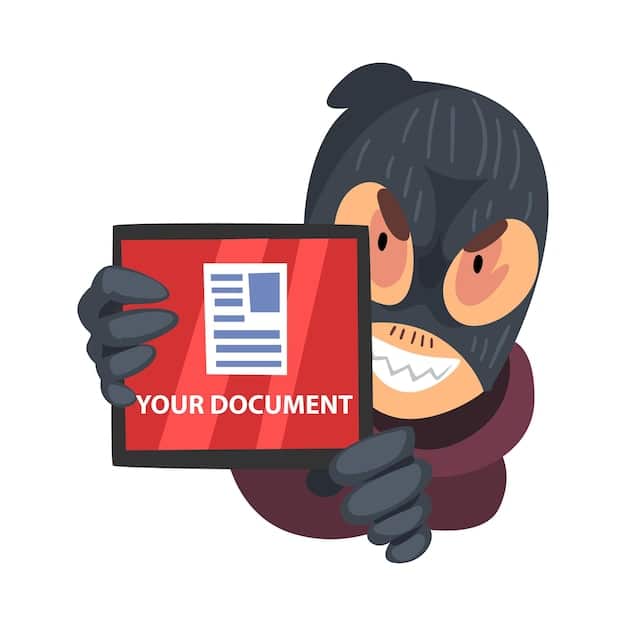Protecting Yourself from Scams: A Guide to Identifying and Avoiding Fraud

Protecting yourself from scams involves recognizing common deceptive tactics used in consumer fraud, understanding the red flags associated with these scams, and implementing strategies to safeguard your personal and financial information.
In today’s digital age, **protecting yourself from scams** is more critical than ever. Fraudsters are constantly evolving their methods, making it increasingly difficult to distinguish legitimate offers from deceptive schemes. Being informed and proactive is your best defense against becoming a victim of consumer fraud.
Understanding Common Scam Tactics
Scams come in many forms, but most rely on psychological manipulation to trick individuals into handing over money or personal information. Recognizing these tactics is the first step in protecting yourself.
Phishing Scams
Phishing scams involve sending fake emails, text messages, or phone calls that appear to be from legitimate organizations. These communications often request personal information, such as passwords, credit card numbers, or social security numbers.
Always be skeptical of unsolicited requests for personal information. Legitimate organizations will rarely ask for sensitive data via email or phone.
Romance Scams
Romance scams occur when fraudsters create fake online profiles to deceive individuals into believing they are in a romantic relationship. Once they have gained the victim’s trust, they will ask for money for various reasons, such as medical emergencies or travel expenses.
Tech Support Scams
Tech support scams involve fraudsters posing as technical support representatives from well-known companies like Microsoft or Apple. They will contact victims claiming their computer has a virus or other problem, and offer to fix it for a fee.
- Never give remote access to your computer to someone you don’t know.
- Be wary of unsolicited phone calls or pop-up messages about computer problems.
- Always verify the legitimacy of tech support companies before paying for their services.

It’s important to remember that companies like Microsoft or Apple will not contact you out of the blue about your computer issues.
In conclusion, understanding these common scam tactics—phishing, romance, and tech support scams—is crucial in building a strong defense. By staying vigilant and questioning unsolicited requests, you can significantly reduce your risk of becoming a victim.
Recognizing Red Flags
Identifying red flags is crucial to protecting yourself from scams. Scammers often use similar tactics and patterns, so being aware of these signs can help you spot a potential scam before it’s too late.
Unsolicited Contact
Be wary of unsolicited phone calls, emails, or text messages from unknown sources. Scammers often contact people out of the blue, hoping to catch them off guard.
Requests for Immediate Payment
Scammers often pressure victims to make immediate payments. They may threaten legal action or other negative consequences if you don’t comply. Legitimate organizations will usually give you time to consider your options.
Requests for Payment via Unusual Methods
Be suspicious of requests for payment via unusual methods, such as gift cards, wire transfers, or cryptocurrency. These payment methods are difficult to trace, making it easier for scammers to get away with your money.
Typos and Grammatical Errors
Scammers often make typos and grammatical errors in their communications. This is because they may be located in other countries and may not have a good command of the English language. Legitimate organizations will usually have professional writers and editors who can ensure their communications are error-free.
- Double-check the sender’s email address for any inconsistencies.
- Be wary of emails with generic greetings, such as “Dear Customer.”
- Look for inconsistencies in the organization’s branding or logo.
Always trust your instincts. If something seems too good to be true, it probably is. Don’t be afraid to hang up the phone, delete the email, or walk away from a suspicious situation.

Being able to recognize these red flags is a powerful tool in your arsenal against scammers. By staying alert and questioning unusual requests or communication patterns, you significantly decrease your chances of falling prey to fraudulent schemes.
Protecting Your Personal Information
Your personal information is valuable and can be used by scammers to steal your identity, open fraudulent accounts, or commit other types of fraud. Protecting your personal information is essential to preventing scams.
Use Strong Passwords
Use strong, unique passwords for all your online accounts. Avoid using easily guessable passwords, such as your name, birthday, or pet’s name. A strong password should be at least 12 characters long and include a combination of uppercase and lowercase letters, numbers, and symbols.
Be Careful What You Share Online
Be careful about what you share online, especially on social media. Scammers can use this information to impersonate you or to target you with personalized scams.
Keep Your Software Updated
Keep your software updated, including your operating system, web browser, and antivirus software. Software updates often include security patches that can protect your computer from malware and other threats.
Monitor Your Credit Report
Monitor your credit report regularly for any signs of fraud, such as unauthorized accounts or inquiries. You can get a free copy of your credit report from each of the three major credit bureaus (Equifax, Experian, and TransUnion) once a year.
Consider using a password manager to securely store your passwords. Password managers can generate strong passwords and automatically fill them in when you visit websites, making it easier to keep your accounts secure.
Limiting the information you share online and taking measures to protect your accounts will greatly reduce your vulnerability to personal information theft.
Securing Your Finances
In addition to protecting your personal information, it’s also important to secure your finances. Scammers often target people’s bank accounts, credit cards, and other financial assets.
Monitor Your Bank and Credit Card Statements
Monitor your bank and credit card statements regularly for any unauthorized transactions. If you see something suspicious, report it to your bank or credit card company immediately.
Be Wary of Unsolicited Financial Offers
Be wary of unsolicited financial offers, such as loans, investments, or credit cards. Scammers often use these offers to lure victims into providing their financial information.
Use Secure Websites
When making online purchases, make sure you’re using a secure website. Look for the “https” in the website address and a padlock icon in the browser window. These indicate that the website is encrypted and that your information is protected.
Don’t Give Out Your Financial Information Over the Phone
Never give out your financial information over the phone unless you initiated the call and you’re certain you’re speaking to a legitimate representative. Scammers often pose as bank representatives or government officials to trick people into providing their financial information.
Securing your finances will not only safeguard your assets but also provide you with peace of mind, knowing that you are taking proactive steps to protect yourself from financial exploitation.
Reporting Scams
If you’ve been a victim of a scam, it’s important to report it to the appropriate authorities. Reporting scams can help prevent others from becoming victims and can also help law enforcement agencies track down and prosecute scammers.
Report Scams to the Federal Trade Commission (FTC)
The FTC is the primary agency responsible for investigating and prosecuting scams. You can report scams to the FTC online or by phone.
Report Scams to Your Local Law Enforcement Agency
You can also report scams to your local law enforcement agency. This is especially important if you’ve lost money or have been threatened by a scammer.
Report Scams to the Social Media Platforms
If you were targeted by a scammer on social media, report the scam to the social media platform. This can help prevent the scammer from targeting other users.
Report Scams to Your Bank or Credit Card Company
If you’ve given a scammer your bank or credit card information, report the scam to your bank or credit card company immediately. They can help you protect your account and prevent further fraud.
Reporting scams is a civic duty that can prevent other people from falling victim to fraud.
Staying Informed and Updated
Scammers are constantly evolving their tactics. Staying informed and updated on the latest scam trends is essential to protecting yourself.
Follow the FTC on Social Media
The FTC regularly posts updates on the latest scams and fraud alerts on its social media accounts.
Sign Up for Email Alerts from the FTC
The FTC also offers email alerts that provide information on the latest scams and fraud prevention tips.
Read News Articles and Blogs About Scams
Many news organizations and blogs regularly publish articles about scams and fraud. Staying informed about these topics can help you recognize and avoid scams.
- Discuss scams with friends and family members.
- Share information about scams on social media.
- Organize presentations or workshops on scam prevention in your community.
Keeping up with current scam trends can significantly increase your awareness and ability to protect yourself and others.
| Key Point | Brief Description |
|---|---|
| 🚨 Recognize Red Flags | Be alert to unsolicited contact, pressure for immediate payment, and unusual payment methods. |
| 🔒 Secure Personal Info | Use strong passwords, limit sharing online, and keep software updated. |
| 💰 Protect Finances | Monitor bank statements, be wary of unsolicited offers, and use secure websites for transactions. |
| 📣 Report Scams | Report any scams to the FTC, local law enforcement, and relevant platforms. |
Frequently Asked Questions
▼
Common scams include phishing, romance scams, tech support fraud, and imposter scams. These often involve requests for money or personal information under false pretenses.
▼
Look for poor grammar, generic greetings, suspicious links, and requests for personal information. Verify the sender’s email address and contact the organization directly.
▼
Stop all communication with the scammer, report the incident to the FTC and local law enforcement, and notify your bank or credit card company.
▼
It’s generally safer to navigate directly to the company’s website rather than clicking on a link in an email, as the link could be malicious.
▼
Use strong passwords, enable two-factor authentication, limit the personal information you share on social media, and keep your software updated.
Conclusion
Protecting yourself from scams requires vigilance, knowledge, and proactive measures. By understanding common scam tactics, recognizing red flags, and securing your personal and financial information, you can significantly reduce your risk of becoming a victim. Staying informed and reporting scams are also critical steps in safeguarding yourself and your community from fraud.





